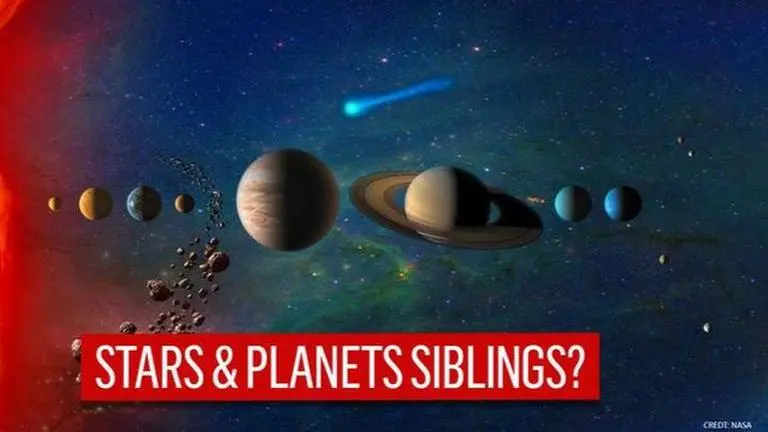Updated 8 October 2020 at 16:59 IST
Scientists discover that stars and planets may be siblings in latest study
Scientists in its latest study have discovered that the planets begin forming while stars are still infants and they grow up together like siblings
- Science News
- 3 min read

Scientists in its latest study have discovered that the planets begin forming while stars are still infants and they grow up together like siblings. The new study conducted by the Centre of Astrophysics, Harvard and Smithsonian (CfA), revealed that planet formation in a star system is younger than 500,000 years old. The new study has a marked difference from previously accepted theories of planet formation as it indicates that stars and planets grow up together like siblings.
Prior to the study, rings of dust have been detected in great numbers in systems older than one million years. During this time scientists assumed that stars are well into adulthood before planets to begin to form. However, this was not the case as the observations of IRS 63 -a young protostar located 470 light-years from Earth, deep within the dense LI709 interstellar cloud in the constellation Ophiuchus revealed that at less than half the age of other young stars with dust rings and younger than 500,000 years old IRS 63 has a long way to go in gathering mass and by now the planets have already begun to form.
Ian Stephens astronomer at CfA said that they observed the young protoplanetary disk called IRS 63 and found gaps and rings within the disk, which is indicative of planet formation. "Traditionally, it was thought that a star does most of its formation before the planets form, but our observations showed that they form simultaneously", he added.
Advertisement
Dominique Segura-Cox, lead author and a scientist at the Max Planck Institute for Extraterrestrial Physics (MPE) in Germany said the rings in the disk around IRS 63 are 'so young'. "We used to have this idea that stars entered adulthood first and were the mothers of planets that came afterward, but now we see that protostars and planets grow and evolve together from early times like siblings", he said.
Advertisement
The observations of the scientist further revealed the implications for understanding the formation of the solar system. According to the scientists, it takes at least 10 Earth masses of solid material to form a planet core capable of accreting enough gas to form a gas giant. Further while researching IRS 63 scientists found that the young disk contains roughly 150 Earth masses of dust and material.
The scientists are further learning a lot about the early formation of planets, including those in our own solar system along with the paired with the rings and gaps present in the disk. Stephens added that the rings and gaps suggest that we are seeing the earliest evidence of planet formation and that planets certainly start to form within the first half million years and probably within the first 1,50,000 years. Planets, especially planets like Jupiter, started their own formation at one of the earliest stages of the star formation process, he said.
(With inputs from ANI)
Published By : Brigitte Fernandes
Published On: 8 October 2020 at 16:59 IST
